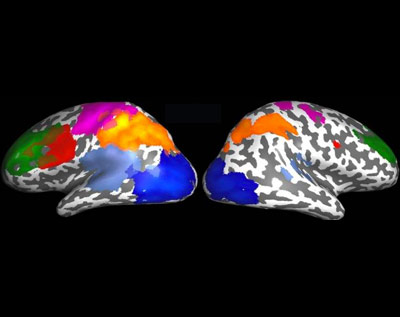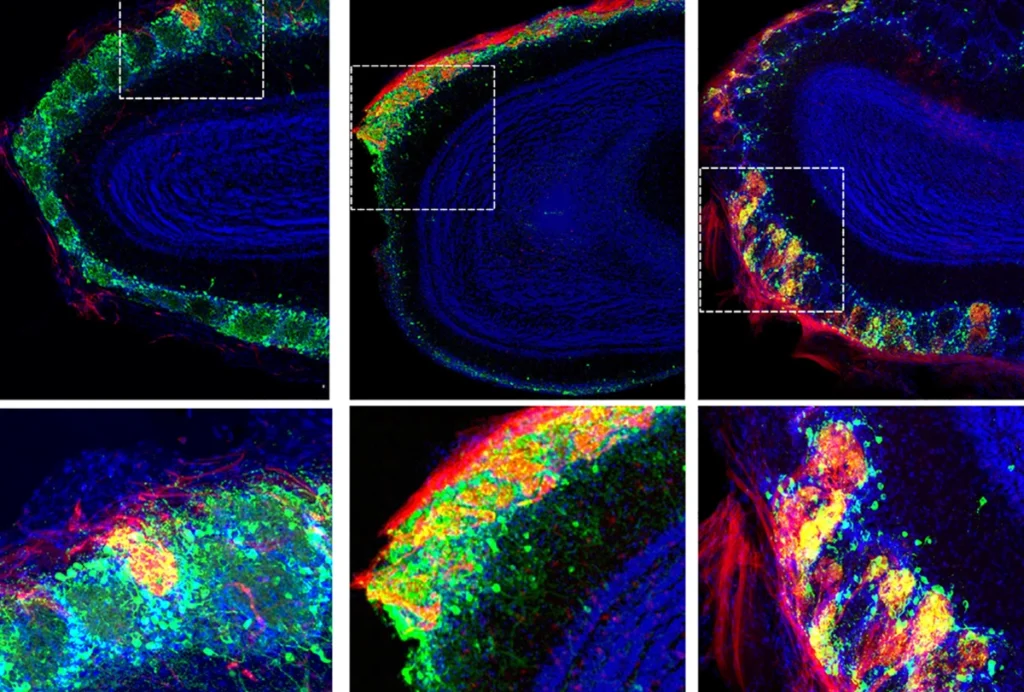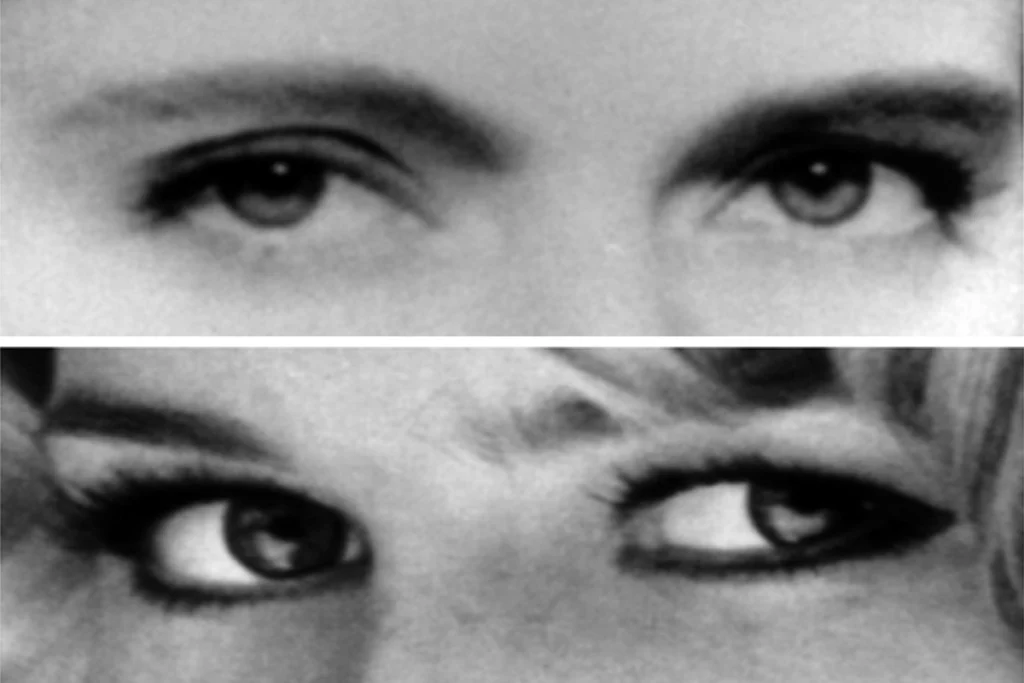Mapping connectivity
A number of imaging tools are available to study connectivity in autism, each providing a slightly different picture of the disorder.
A number of tools are available to study connectivity in autism, each with strengths and limitations.







Structural magnetic resonance imaging (MRI) takes static pictures of the brain that researchers can use to measure the volume and thickness of the structures within. It can also resolve the corpus callosum, the long and thick bundle of fibers that bridges the left and right hemispheres of the brain (shown here with its seven subsections in different colors). The corpus callosum is smaller in individuals with autism than in controls. Structural MRI can also measure the total volume of white matter, the nerve fibers that connect different regions, but it cannot detect the vast majority of white matter tracts in the brain.
Diffusion tensor imaging uses an MRI machine to measure the movement of water molecules in the brain. Water tends to flow along the white matter bundles that connect neurons, providing an indirect picture of the anatomical connections between different brain regions (shown here in different colors). Based on this technique, researchers have suggested that white matter in some brain regions is different in people with autism than in controls. Specifically, people with autism have lower 'fractional anisotropy,' a measure of how strongly water moves in one direction. It's not clear, however, whether this indicates a defect in the integrity of the fibers or fewer fibers than there are in controls.
To see the brain in action, researchers use functional MRI. This method tracks the flow of blood in the brain, an indirect measure of neuronal activity, while participants perform a task in the scanner. The method can be used to measure what's known as 'functional connectivity,' or the extent to which two regions are active at the same time.
In 2010, for example, researchers showed that while classifying geometric designs, children carrying a certain variant of CNTNAP2, an autism risk gene, have weak functional connections between relatively distant regions in the frontal lobe. As the yellow circles in the picture show, these children have neuronal activity that is distributed across the brain, whereas those who don't carry this variant have more focused brain connectivity in the frontal region.
In contrast, fMRI is not well suited to track functional connectivity in nearby regions. Because neighboring brain areas depend on the same blood supply, it's impossible to distinguish connectivity differences at this level. Also, the method is challenging to carry out in children — especially in children with autism — because participants must keep their heads perfectly still for up to an hour at a time.
Instead of scanning the brain during a specific task, which takes about an hour, so-called resting-state functional connectivity uses MRI to scan spontaneous brain activity over just five to ten minutes. It also measures functional connectivity, assuming that two regions active at the same time are functionally connected.
The technique has shown that in toddlers with autism, brain regions linked to language are out of syncon the left and right sides (as shown here), suggesting lower functional connectivity across the brain than in controls. Another study showed that children who carry a common variant of the autism-linked gene MET are poorly synchronized within the default mode network — which is active when an individual is at rest — suggesting that this region, too, is less functionally connected in people with autism than in controls.
The study of resting-state functional connectivity has become popular in the past few years, but in 2011 researchers reported that the method is prone to a significant head-motion confound. The artifact makes short-range connections (blue) seem stronger than they are, and long-range connections (red) seem weaker, especially in children. This finding has caused some experts to worry that the patterns seen in autism are just the result of the children moving more than controls.
Brain imaging methods that use MRI have great spatial resolution, but relatively poor temporal resolution, picking up blood-flow changes on the order of seconds. In contrast, electroencephalography (EEG)— a noninvasive technique that measures brain waves through electrodes on the skull — can detect brain waves that cycle 100 times per second.
To measure connectivity with EEG, researchers calculate 'EEG coherence,' which indicates how well EEG wave signals from two spots on the brain match up. EEG coherence is thought to reflect synchronized activity of large groups of neurons, another measure of functional connectivity.
One 2007 study showed, for example, that for brain waves of certain frequencies (left and right circles), individuals with autism have a higher EEG coherence than controls do. In contrast, for other types of waves (middle circle), controls have higher EEG coherence than individuals with autism do. One drawback of EEG is that electrical signals can be distorted as they travel through the skull.
Magnetoencephalography, or MEG, is similar to EEG except that it measures magnetic fields. Unlike the electrical fields of EEG, magnetic fields don't change as they travel through different tissues. MEG is a relatively expensive and rare technique, but is gaining popularity at large academic medical centers.
A study this year showed that MEG can be used to detect instances when certain slow and fast waves occur at the same time. These specific wave couplings turn out to be indirect markers of local connectivity, which is difficult to track using other types of imaging. The picture shows the level of local connectivity (red) in the fusiform gyrus — a small region of the cortex that is active when looking at faces — when individuals with autism (right) and controls (left) look at pictures of faces.
Explore more from The Transmitter

Rat neurons thrive in a mouse brain world, testing ‘nature versus nurture’
